There are two cases concerning evolution of the axis of an emerging flux tube, as schematically explained in Figure 3a. In Case I the original axis (black dot) has emerged into the corona, while in Case II a new axis (white dot) has appeared in the corona and the original axis (black dot) stays near to the surface. These two cases may be distinguished by measuring an emerged rate of magnetic flux (ratio of emerged flux to the total flux contained by pre-emergent flux tube) at each atmospheric level (z = z_b), given by

where Φ_0 is the total flux
and t_0 is a selected time. In Case II f(z_b) has a sharply decreasing profile because almost half of the total flux remains near and below the surface. In the flux-emergence simulation reported in Magara (2013), we found that the value of z_b giving f(z_b) = 0.5 is between 10 and 20 (normalized by 540 km) at t_0 = 40,
and about 90% of the total flux emerged above the surface at
that time (Figure 3b), supporting a situation suggested by Case I.
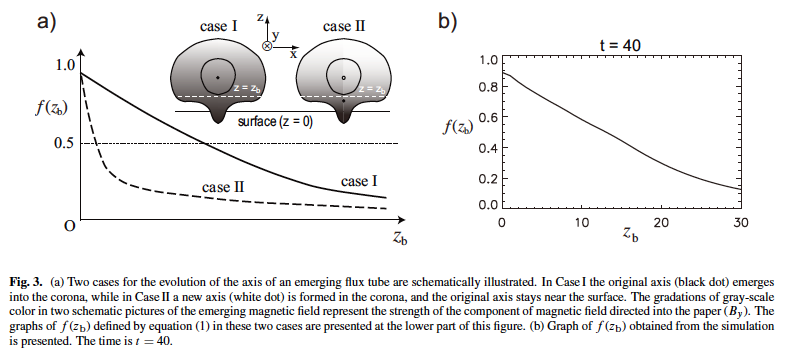
Reference
Magara, T. 2013 PASJ, 65, L5
We also examined flux emergence in various cases, including those investigated with a kinematic emergence model in which a twisted flux tube emerges at a prescribed rising velocity.
We derived a temporally decreasing profile of the rising velocity by comparing the kinematic model to a series of magnetohydrodynamic
simulations where we changed those parameters characterizing a pre-emergent state of the flux tube: radius, field strength, field-line twist, and undulation wavelength. We discussed pre-eruptive magnetic structure suggested by the kinematic model and dynamic (flux-emergence simulation-based) model (Magara 2012).
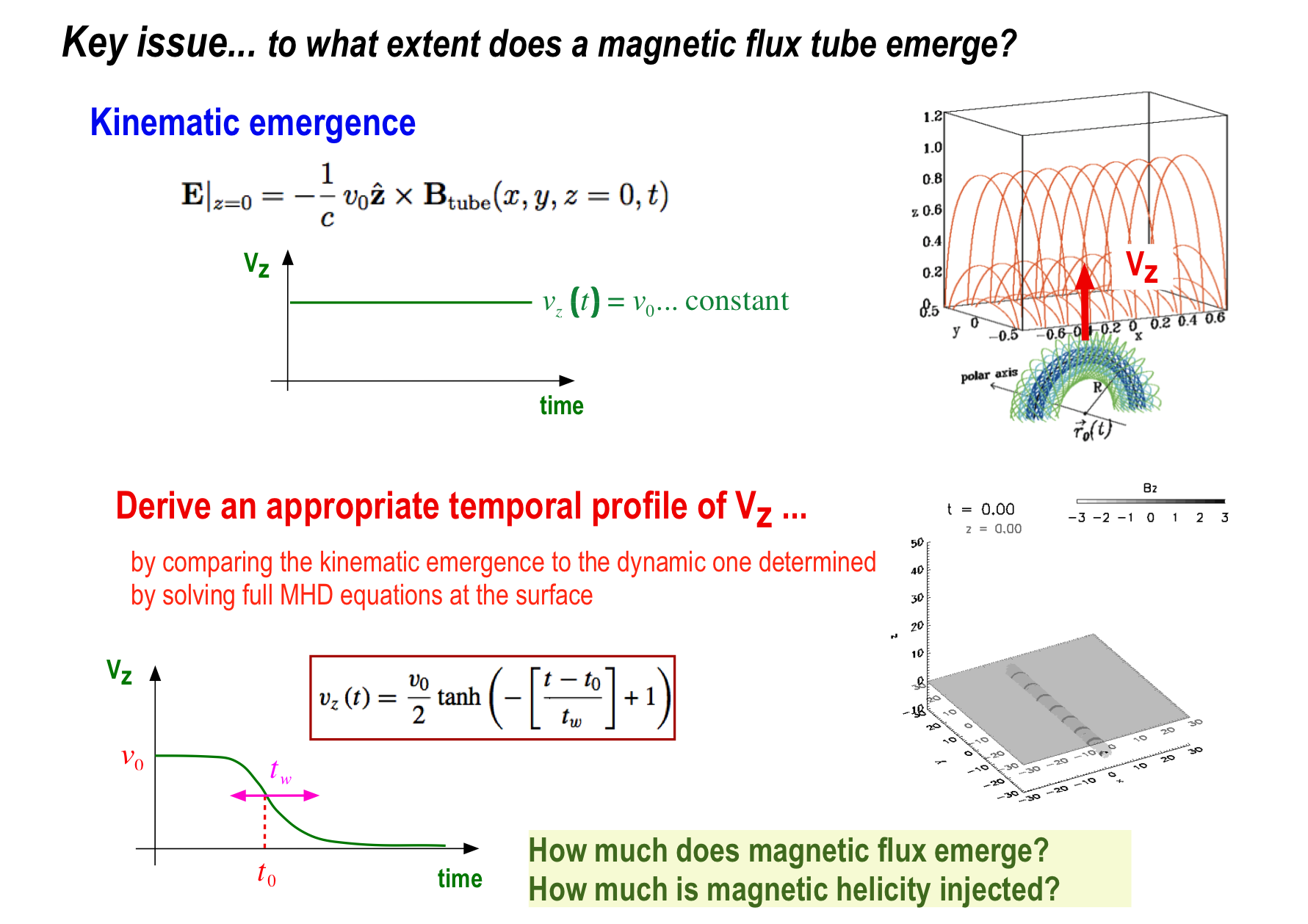
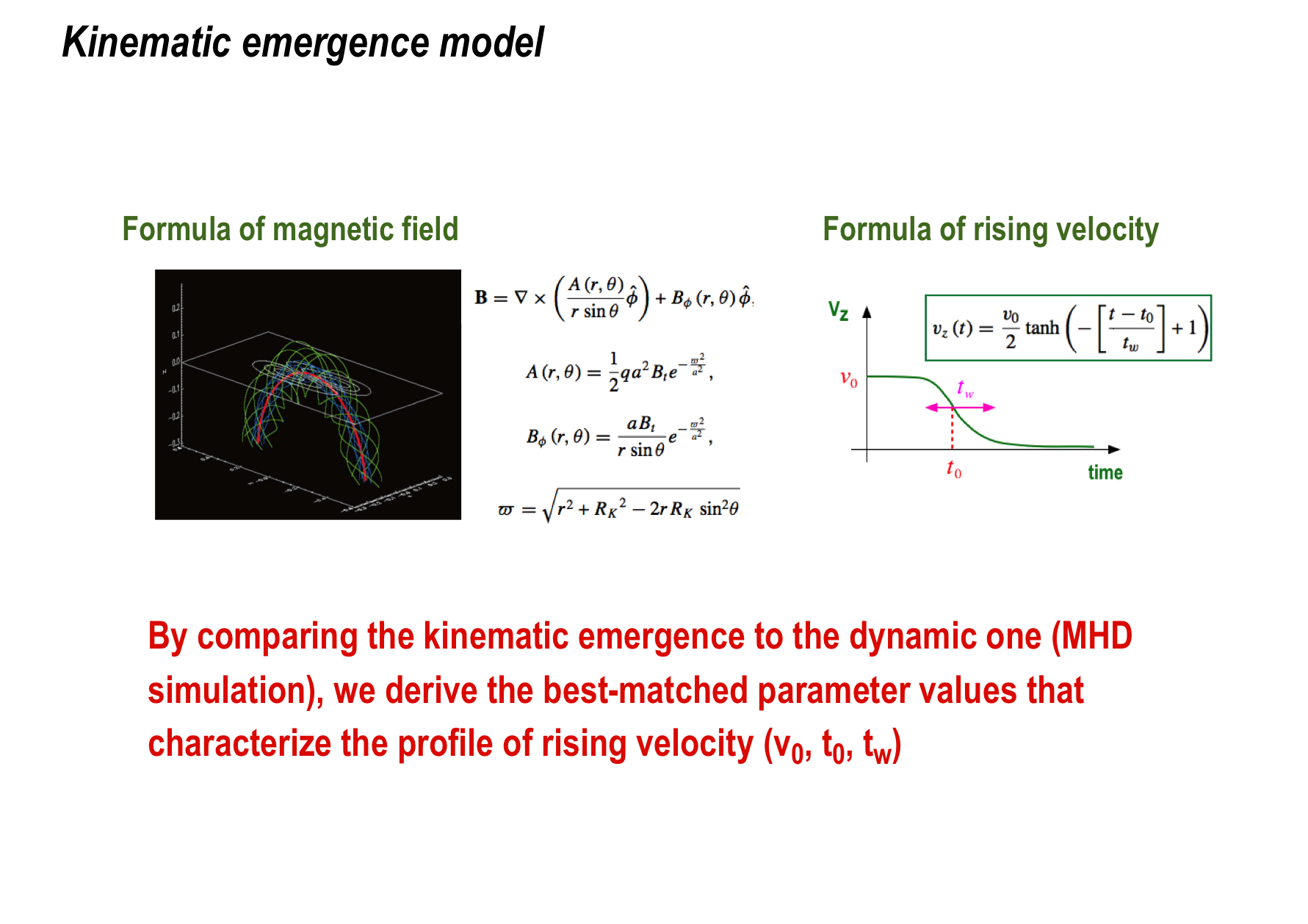
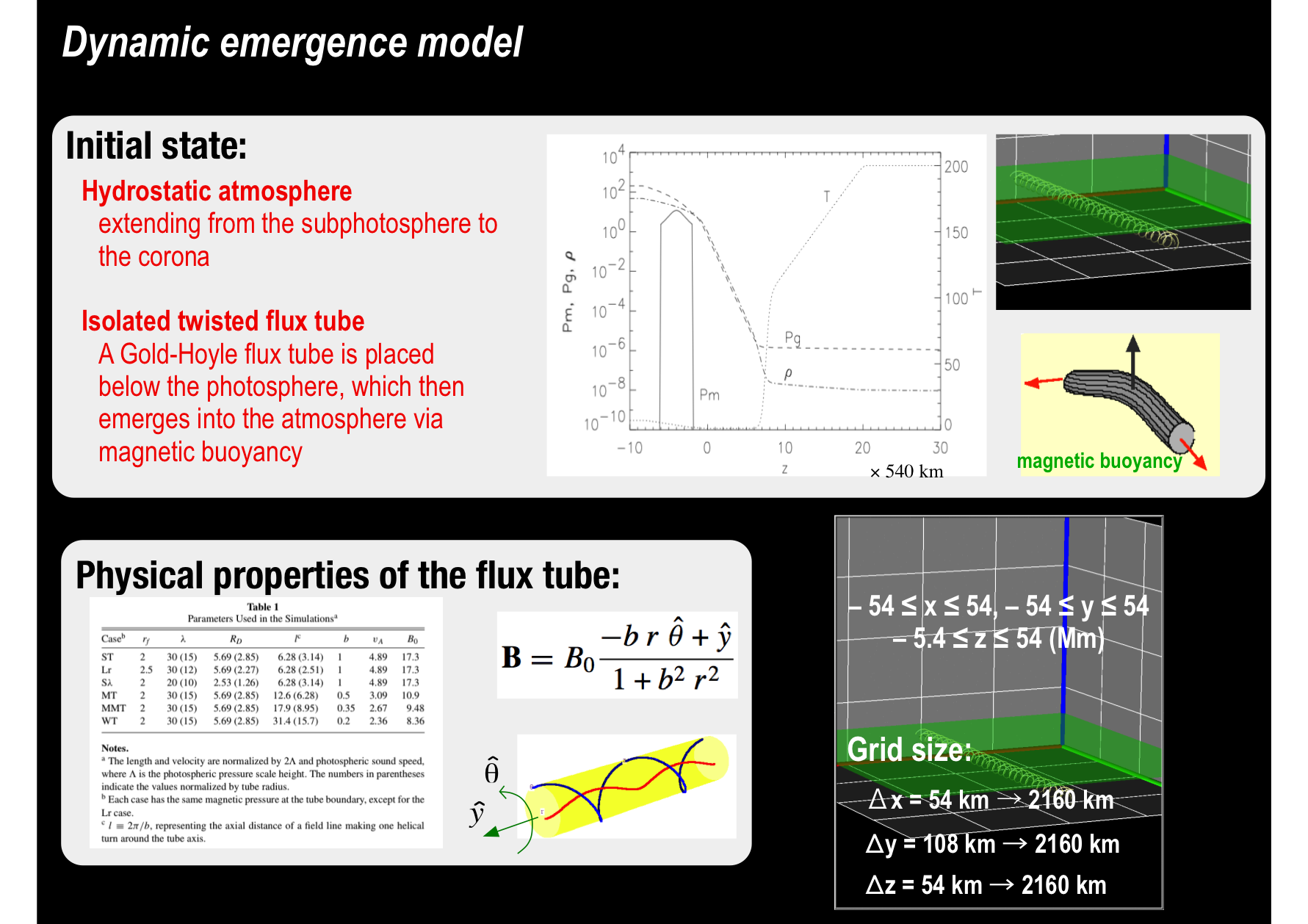
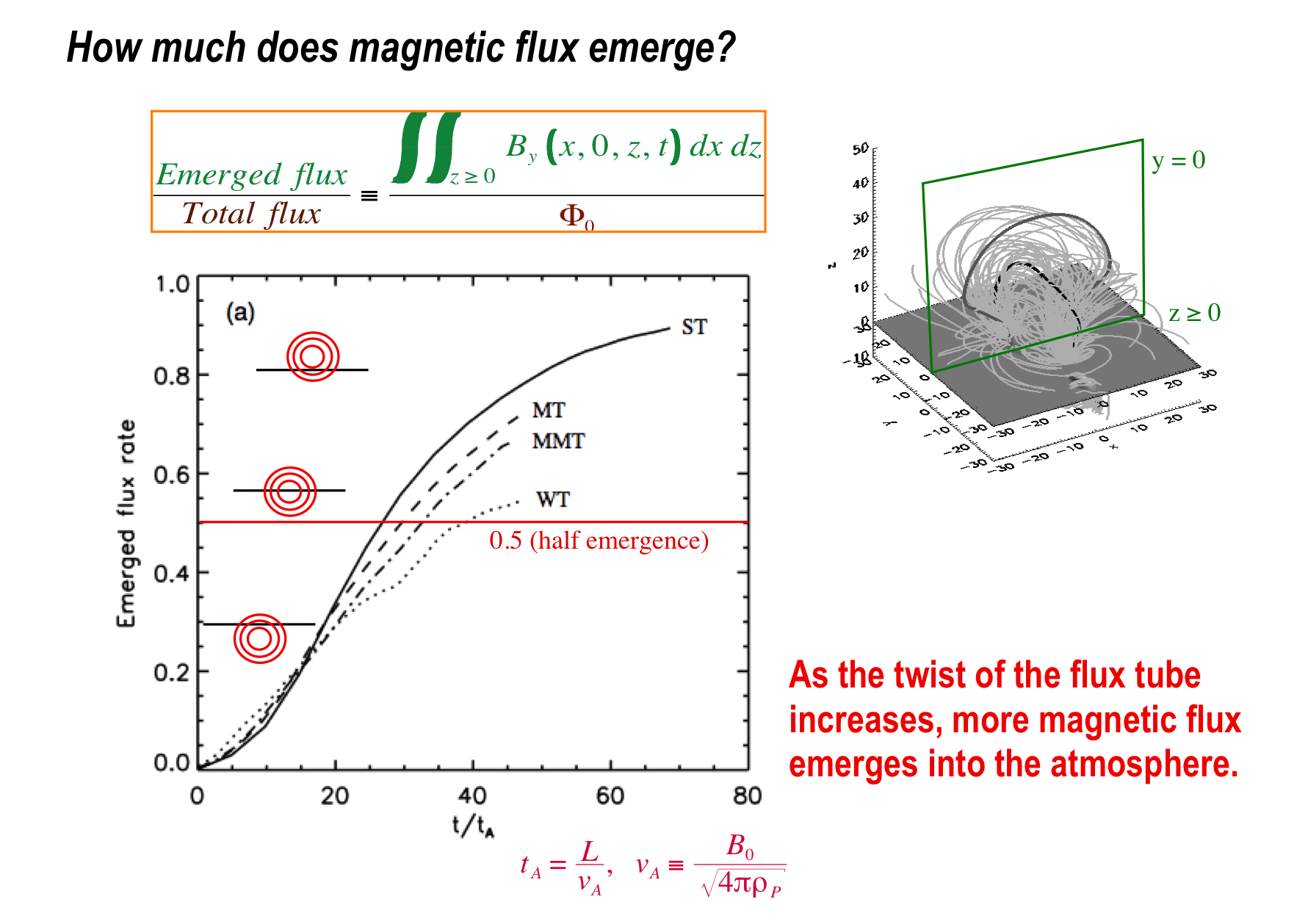
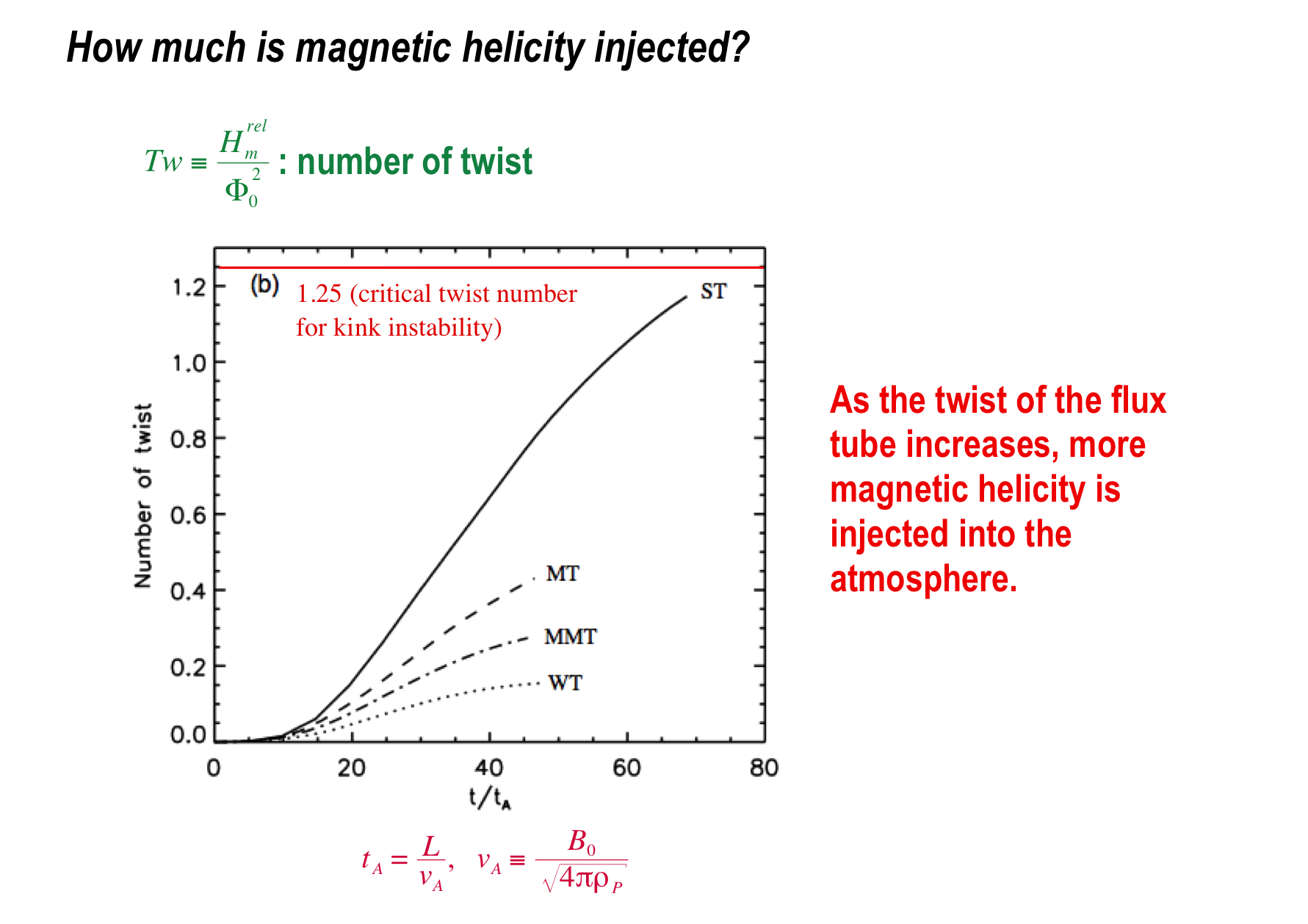
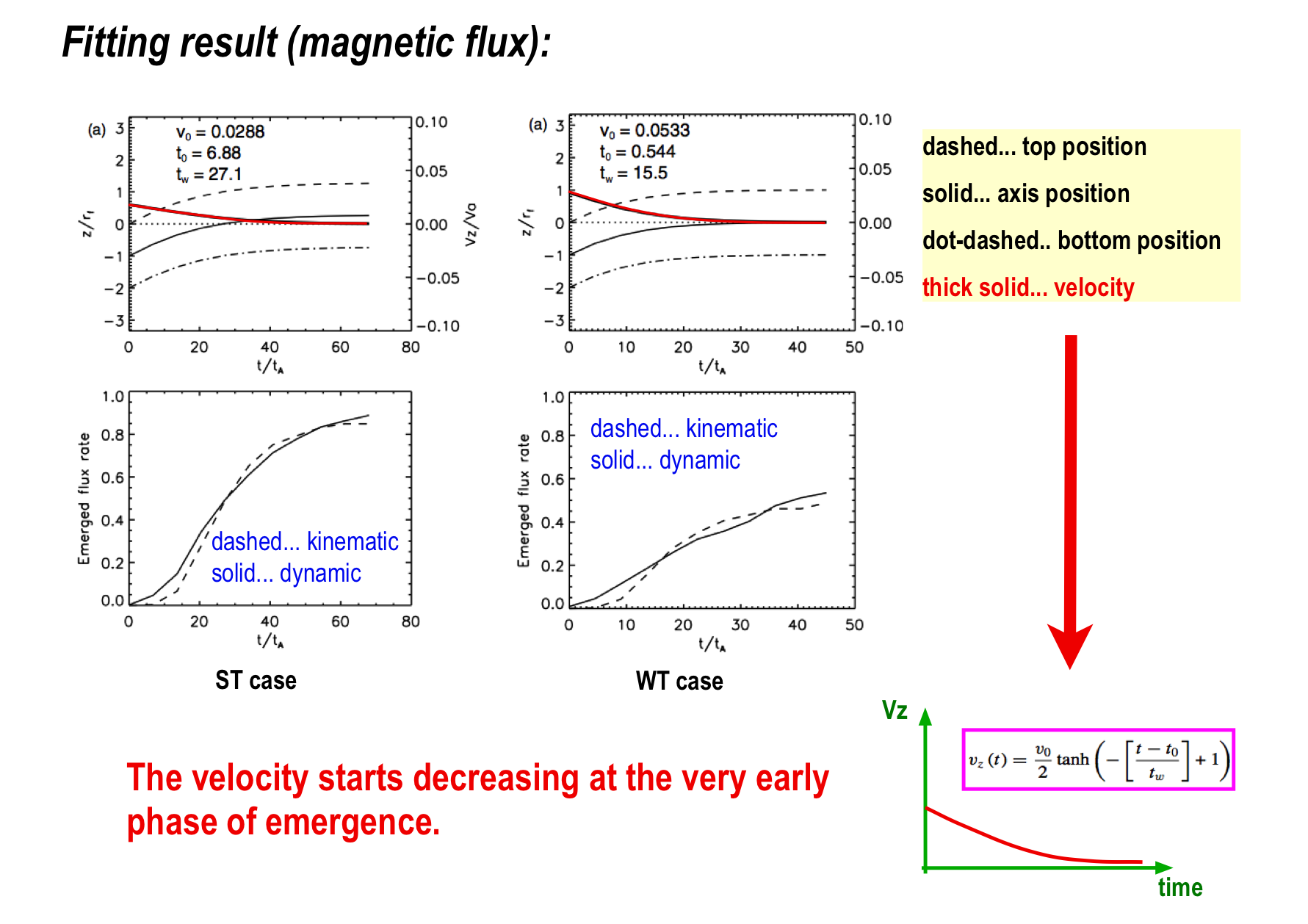
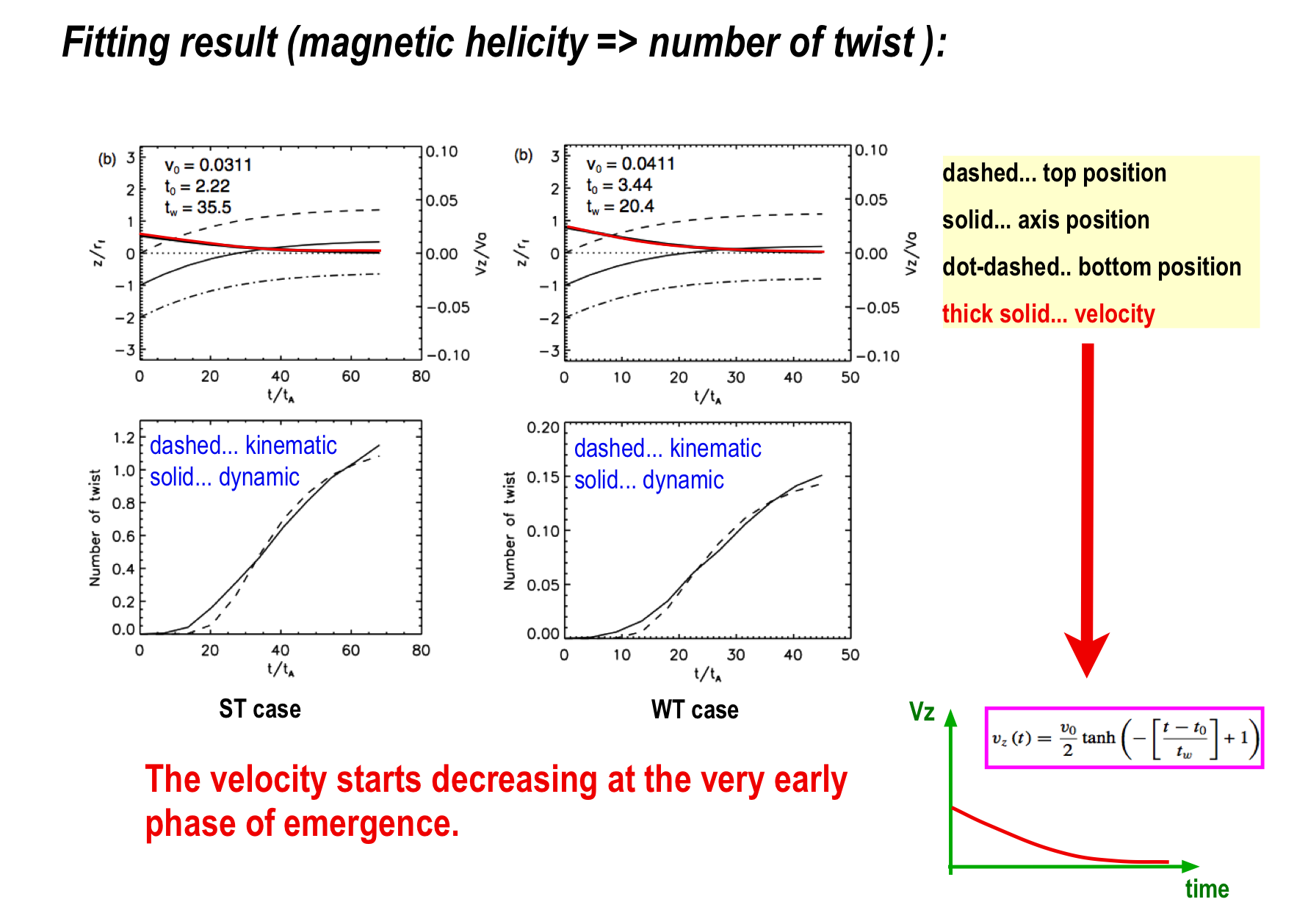
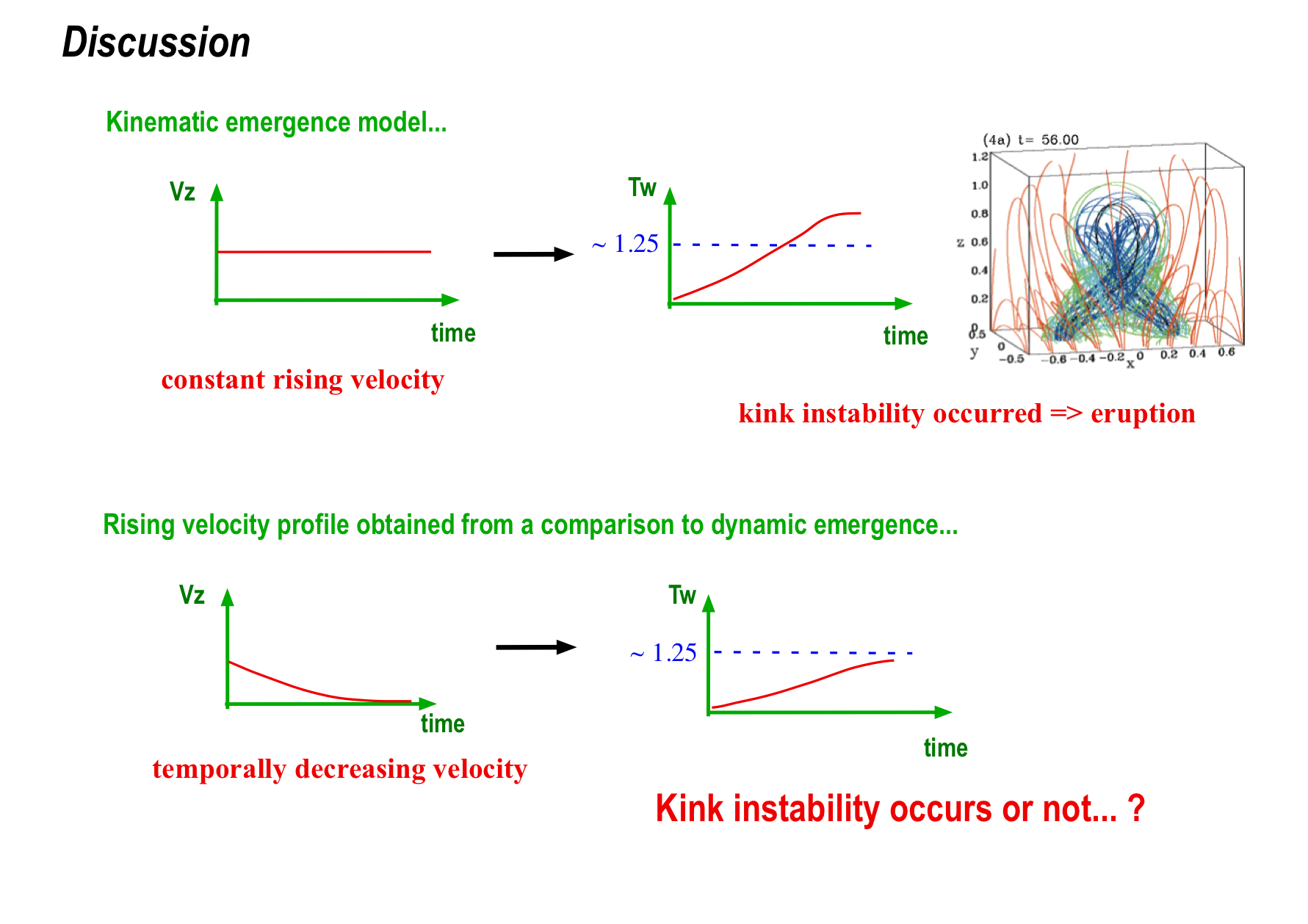
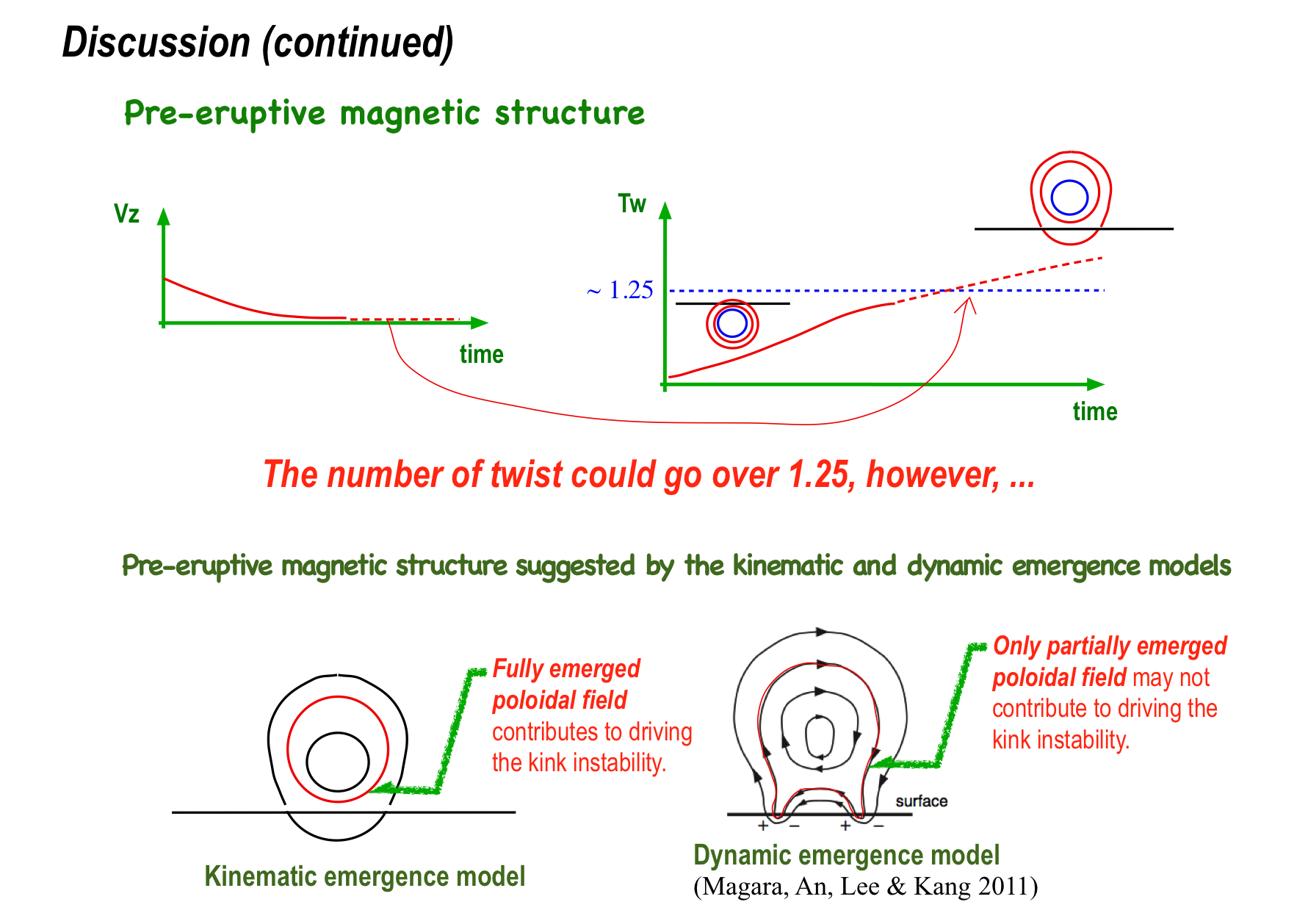
Reference
Magara, T. 2012 ApJ, 748, 53
Fan, Y. & Gibson, S. E. 2004, ApJ, 609, 1123
Magara, T. et al. 2011 JKAS, 44, 143







